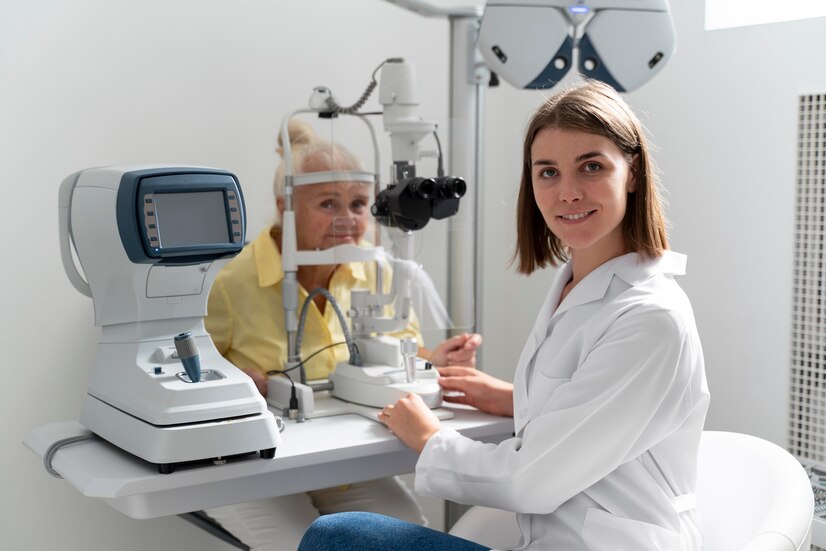We provide you the best Ophthalmology treatment in Chennai

What is Glaucoma?
Glaucoma is a serious eye condition that causes damage to the optic nerve, often due to increased pressure inside the eye. This pressure, known as intraocular pressure, can progressively damage the optic nerve, which is crucial for transmitting visual information from the eye to the brain. If left untreated, glaucoma can lead to significant vision loss and even blindness.
Understanding Glaucoma
Intraocular Pressure The buildup of pressure within the eye is a primary cause of glaucoma. This increased pressure can occur due to various reasons, including improper drainage of eye fluids. Over time, elevated intraocular pressure can damage the optic nerve fibers, impairing your vision.
Optic Nerve Damage The optic nerve is essential for vision as it carries visual information from the retina to the brain. Damage to this nerve results in vision loss, which can start with peripheral vision and eventually affect central vision.
What We Do
At Smart Vision Hospital, we offer comprehensive diagnostic and management services for glaucoma to protect your vision and prevent further damage. Our approach includes:
Intraocular Pressure Monitoring Regular monitoring of intraocular pressure is crucial in managing glaucoma. We use advanced tonometry techniques to measure the pressure inside your eye accurately.
Gonioscopy This diagnostic procedure allows us to examine the drainage angle of your eye, helping to identify the type of glaucoma and the best treatment approach.
Visual Field Testing Glaucoma often affects peripheral vision first. Visual field testing helps us detect and monitor any loss of vision, providing critical information about the progression of the disease.
Pachymetry Measuring the thickness of your cornea is essential in accurately assessing intraocular pressure. Pachymetry is a quick and painless test that provides valuable data for diagnosing and managing glaucoma.
Complete Eye Checkup A thorough eye examination is conducted to evaluate the overall health of your eyes and to detect any early signs of glaucoma. This comprehensive checkup is vital for early intervention and effective management.
FAQs on Glaucoma & Diabetes
Glaucoma is a group of diseases involving optic nerve damage, increased intraocular pressure with changes in field of vision. It can be open angle glaucoma, closed angle glaucoma, secondary glaucoma and normal tension glaucoma.
Statistically after seeing a large population of diabetics it has been found that around 40 % of them have raised intraocular pressure
Increased intraocular pressure can result in eye pain. It may co exist with Diabetic retinopathy or can be caused by complications resulting from it
Diabetes can cause dry eye due to autonomic neuropathy. The same process could decrease the corneal sensation. Diabetic cranial nerve palsies can affect the eye.Glaucoma and cataracts are associated with Diabetes and the direct affection is in the form of retinopathy and optic neuropathy
There is an increased rate of cataract formation in uncontrolled diabetics
In most open angle glaucomas there are hardly any symptoms . it has been called “the silent thief of sight”. Close angle glaucomas are an emergency and cause extreme pain. They are much rarer then open angle glaucomas but in the eastern Asian race they are much more commoner
It is basically an optic neuropathy which is caused by various factors, the most important being the increased IOP, which is the treatable one. Though still there are Glaucomas which have IOP in the normal or low range. Therefore it is imperative that the examination of every glaucoma patient is extremely thorough
There is an increased incidence of Glaucomas seen in diabetic patients
Increased IOP, Visual field affliction, Changes in the OCT and most importantly optic disc damage as manifested by an increased cup: disc ratio. A narrow angle is seen in some Glaucomas which is quantified gonioscopically which means the study of the anterior chamber angles
All Glaucoma treatment is highly individualised ,depending on the type of glaucoma, the current status of the IOP and optic disc, the visual field changes, the rate of progression, the age of the patient and life expectancy, the presence of other systemic diseases ,OCT changes and the personality type of the patient.
Some investigators have explored glaucoma and related neurodegenerative [i.e., the degeneration of nervous system tissue] diseases from many perspectives and come up with a … concept of glaucoma being “diabetes of the brain.” On the basis of the striking similarities in genetic, biochemical, and molecular aspects, they have come to recognize that glaucoma is, in fact, a form of brain-specific diabetes
The most important complication is a loss of the field of vision which can be quite severe in spite of the vision being 20/20 or 6/6 in some cases. This is a very debilitating experience of an advanced glaucoma patient . In addition there could be an issue of severe pain in some cases of high IOP

